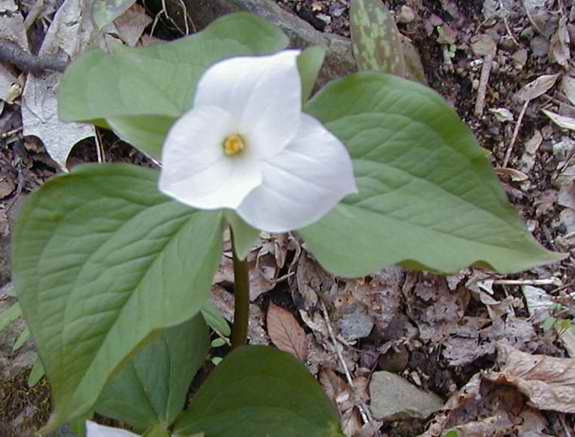|
Common
Name: Trillium, Trinity flower,
Birthroot Scientific Name: Trillium grandiflorum (Latin for three lily [lilium] with large flowers) A large three-petal white flower with three whorled leaves around the stalk which stands about 30 centimeters in height found in moist areas of deciduous forests. It is widely held that the white flowers turn pink as the plant ages; however, many start out pink. Potpourri: The trillium's growth cycle is very complicated. The seed requires about 80 days of cold to germinate in the first winter with initial shoots released in the second winter. It does not flower until about five years after germination. If the flower is picked, it will not come back for another year. The Trillium is myrmecochorous meaning that it attracts ants. The symbiotic relationship is due to the presence of a large blob of oil on the fatty seeds (eliaosomes) of the Trillium. When the seeds fall, the ants carry them back to their nest to remove the oil. The seed is left to germinate, resulting in the propagation of the plant. Native Americans had many medicinal uses for the Trillium. The juice was squeezed directly into the eye as a medicine or the root was soaked to make an eye wash. The astringent decoction was also used as a dressing for inflammation and was used to control postpartum bleeding. This is the basis for the name birthroot. Women used the Trillium as a love potion, boiling the root and dropping it into the food of the intended beau. An Indian story told of a beautiful girl who made a love potion for her intended, only to inadvertently drop it into the food of an ugly old man. He ate it and followed the unfortunate girl around begging her to marry him. |
